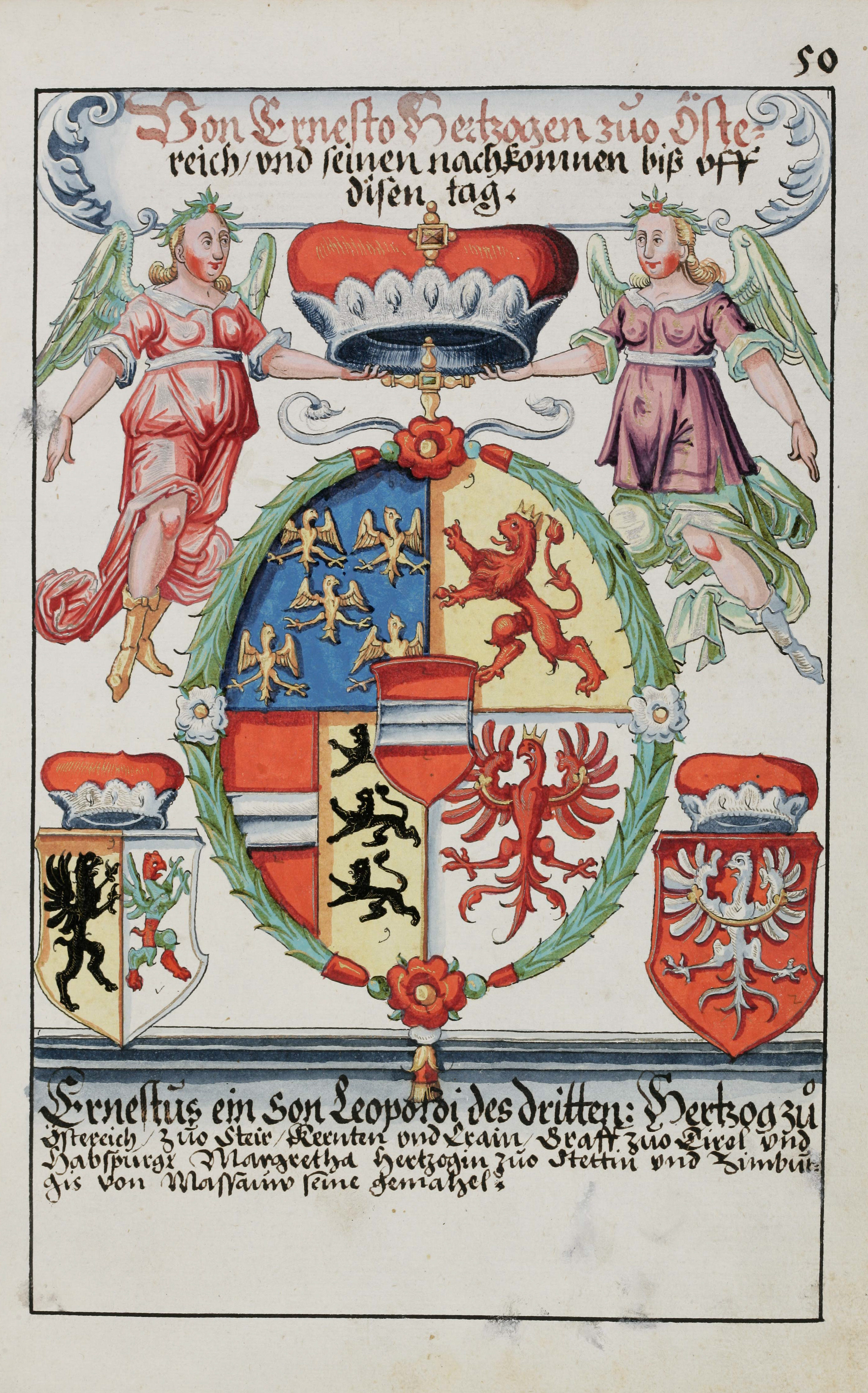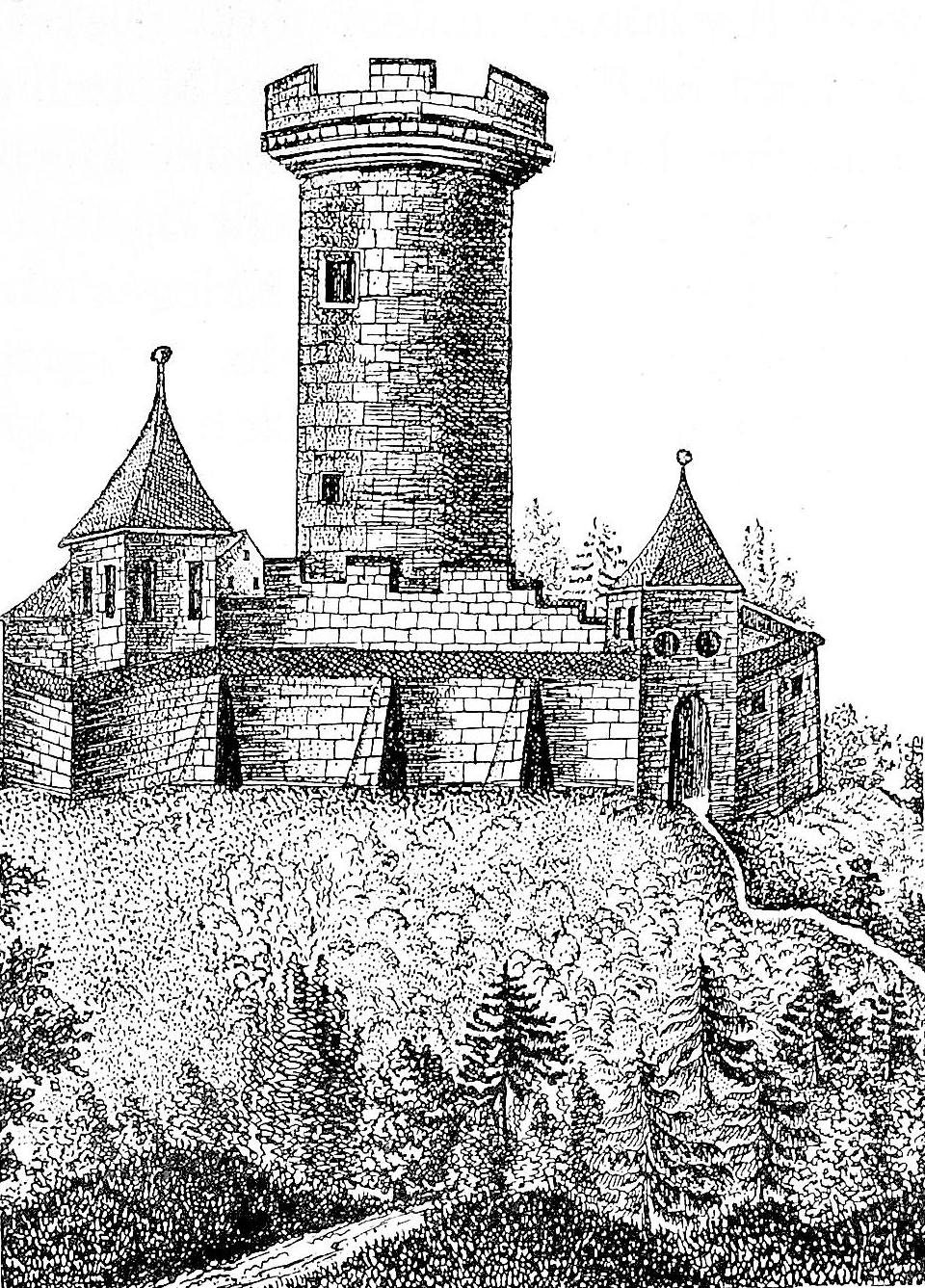|
Charles I, Margrave Of Baden-Baden
Charles I of Baden (1427 – 24 February 1475, Pforzheim Pforzheim () is a List of cities and towns in Germany, city of over 125,000 inhabitants in the federal state of Baden-Württemberg, in the southwest of Germany. It is known for its jewelry and watch-making industry, and as such has gained the ...) was a Margrave of Baden-Baden during 1454–1475. Charles was the elder son of Jacob, Margrave of Baden-Baden, and his wife Catherine, daughter of Charles II, Duke of Lorraine. In 1462 he became involved in the Bavarian War (1459–63) against Frederick I, Elector Palatine. This war finished in the same year with Charles's defeat and capture at the Battle of Seckenheim in 1462. Family and children On 1 July 1447, Charles married Catherine of Austria (1423 – 11 September 1493), daughter of Archduke Ernest the Iron. They had: # Katharina (15 January 1449 – before 8 May 1484), married on 19 May 1464 to Count George III of Werdenberg-Sargans # Zimburg (15 May 1450 ... [...More Info...] [...Related Items...] OR: [Wikipedia] [Google] [Baidu] |
Margrave Of Baden-Baden
The Margraviate of Baden-Baden was an early modern southwest German territory within the Holy Roman Empire. It was created in 1535 along with the Margraviate of Baden-Durlach as a result of the division of the Margraviate of Baden. Its territory consisted of a core area on the middle stretch of the Upper Rhine around the capital city of Baden-Baden, Baden, as well as lordships on the Moselle and Nahe (Rhine), Nahe. While Protestantism took hold in Baden-Durlach, Baden-Baden was Catholic from the Thirty Years' War (1618-1648) onwards. After the complete destruction of the territory in the Nine Years' War (1688-1697), Margrave Louis William, Margrave of Baden-Baden, Louis William, the "Turkishlouis", moved the capital to Rastatt and built Schloss Rastatt there, the first baroque palace on the Upper Rhine. Under the regency of his widow, Princess Sibylle of Saxe-Lauenburg, Sibylle of Saxe-Lauenburg, further baroque structures were built. When her second son Augustus George, Margrave ... [...More Info...] [...Related Items...] OR: [Wikipedia] [Google] [Baidu] |
Battle Of Seckenheim
The Battle of Seckenheim (June 1462) saw the army of the Electoral Palatinate led by Frederick I, Elector Palatine and his ally Dieter von Isenburg face an invading army led by Charles I, Margrave of Baden-Baden, Ulrich V, Count of Württemberg, Louis I, Count Palatine of Zweibrücken, and George of Baden, the Bishop of Metz. Without warning, Frederick suddenly struck at the invaders, trapping them in the fork of two major rivers. Though about 300 knights cut their way out, causing many non-combatant casualties, the Palatine forces were victorious. Frederick captured three of the enemy leaders and wrung ransoms and territorial concessions from them. Seckenheim is now part of the city of Mannheim in the state of Baden-Württemberg, Germany. The combat occurred during the Mainz Feud (''Mainzer Stiftsfehde''), part of the larger Bavarian War (1459–63). Background On 4 July 1460, Frederick I, Elector Palatine defeated Dieter von Isenburg in the Battle of Pfeddersheim. But i ... [...More Info...] [...Related Items...] OR: [Wikipedia] [Google] [Baidu] |
1427 Births
Year 1427 (Roman numerals, MCDXXVII) was a common year starting on Wednesday of the Julian calendar. Events January–June * January 16 – The papacy of Pope Gabriel V of Alexandria, leader of the Coptic Orthodox Church in Egypt, ends after a reign of more than 17 years. * January – Radu II of Wallachia resumes the throne of Wallachia for the fourth time, but a seven-year struggle for it ends in March when he is defeated in battle, and probably killed, by Dan II of Wallachia, Dan II, who resumes the throne for a fifth term. * February 23 – In Spain, the first tremors are felt in the Principality of Catalonia of what will become a devastating 1428 Catalonia earthquake, 6.7 magnitude earthquake that will happen less than a year later, on February 2, 1428. * March 29 – In Vietnam, the Ming dynasty China army invades a second time, bringing 120,000 reinforcement troops led by General Mu Sheng to crush the Lam Sơn uprising. April–June * April ... [...More Info...] [...Related Items...] OR: [Wikipedia] [Google] [Baidu] |
Margraves Of Baden-Baden
The Margraviate of Baden-Baden was an early modern southwest German territory within the Holy Roman Empire. It was created in 1535 along with the Margraviate of Baden-Durlach as a result of the division of the Margraviate of Baden. Its territory consisted of a core area on the middle stretch of the Upper Rhine around the capital city of Baden-Baden, Baden, as well as lordships on the Moselle and Nahe (Rhine), Nahe. While Protestantism took hold in Baden-Durlach, Baden-Baden was Catholic from the Thirty Years' War (1618-1648) onwards. After the complete destruction of the territory in the Nine Years' War (1688-1697), Margrave Louis William, Margrave of Baden-Baden, Louis William, the "Turkishlouis", moved the capital to Rastatt and built Schloss Rastatt there, the first baroque palace on the Upper Rhine. Under the regency of his widow, Princess Sibylle of Saxe-Lauenburg, Sibylle of Saxe-Lauenburg, further baroque structures were built. When her second son Augustus George, Margrave ... [...More Info...] [...Related Items...] OR: [Wikipedia] [Google] [Baidu] |
List Of Rulers Of Baden
Baden was an Imperial Estate of the Holy Roman Empire and later one of the German states along the France–Germany border, frontier with France, primarily consisting of territory along the right bank of the Rhine, opposite Alsace and the Palatinate (region), Palatinate. History The territory evolved out of the Breisgau, an early medieval county in the Duchy of Swabia. A continuous sequence of counts is known since 962; the counts belong to the House of Zähringen. In 1061, the counts first acquired the additional title of Margrave of Verona. Even though they lost the March of Verona soon thereafter, they kept the title of margrave. In 1112, the title of Margrave of Baden was first used. For most of the early modern period, the Margraviate of Baden was divided into two parts, one ruled by the Catholic Margraves of Baden-Baden, and the other by the Protestant Margraves of Baden-Durlach. In 1771, the main Baden-Baden line became extinct, and all of the Baden lands came under the r ... [...More Info...] [...Related Items...] OR: [Wikipedia] [Google] [Baidu] |
Archdiocese Of Utrecht (695–1580)
The archdiocese, archbishopric, diocese or Bishopric of Utrecht may refer to: * Diocese of Utrecht (695–1580) The historic Diocese of Utrecht was a diocese of the Latin Church (or Western) of the Catholic Church from 695 to 1580, and from 1559 archdiocese in the Low Countries before and during the Protestant Reformation. History Diocese According to th ..., the historic diocese and after 1559 archdiocese before and during the Protestant Reformation ** Prince-Bishopric of Utrecht (1024–1528), the temporal jurisdiction of the bishops * Roman Catholic Archdiocese of Utrecht (1853 – present), the current archdiocese in the Netherlands within the Catholic Church * Old Catholic Archdiocese of Utrecht (1723 – present), the current archdiocese within the Old Catholic Church of the Netherlands See also * List of bishops and archbishops of Utrecht {{disambig ... [...More Info...] [...Related Items...] OR: [Wikipedia] [Google] [Baidu] |
Lichtenthal
Lichtenthal Abbey () is a Cistercian nunnery in Lichtenthal in the town of Baden-Baden, Germany. History and buildings The abbey was founded in 1245 by Irmengard bei Rhein, widow of Margrave Hermann V of Baden, whose body she had brought here in 1248 from Backnang Abbey for re-burial.Their son and Hermann's successor, Rudolf I, is also buried here. She seriously over-reached herself financially on the project, however, and was obliged to ask her family for help. The imposing gateway, built in 1781, leads into a three-sided walled courtyard with a fountain dedicated to the Blessed Virgin Mary, surrounded by the various abbey and domestic buildings, the school, the abbey church, the Prince's Chapel and the hermit's chapel. The Gothic abbey church, of which the choir dates from the 14th century and the nave from the 15th, contains works of art and furnishings of many dates, particularly of the 15th century, as at this time, on the initiative of the Abbess Margaret of Baden, th ... [...More Info...] [...Related Items...] OR: [Wikipedia] [Google] [Baidu] |
Engelbert II Of Nassau-Dillenburg
Engelbert II of Nassau, ''Engelbrecht'' in Dutch (17 May 1451 – 31 May 1504), was count of Nassau and Vianden and lord of Breda, Lek, Diest, Roosendaal, Nispen and Wouw. He was a soldier and courtier, for some time leader of the Privy council of the Duchy of Burgundy and a significant patron of the arts. Biography Engelbert was born in Breda on 17 May 1451, the son of John IV of Nassau-Siegen and his wife Mary of Looz-Heinsberg.George Chastelain and the Shaping of Valois Burgundy: Political and Historical Culture at Court in the Fifteenth Century by Graeme Small (, 1997) [...More Info...] [...Related Items...] OR: [Wikipedia] [Google] [Baidu] |
George III Of Werdenberg-Sargans
George may refer to: Names * George (given name) * George (surname) People * George (singer), American-Canadian singer George Nozuka, known by the mononym George * George Papagheorghe, also known as Jorge / GEØRGE * George, stage name of Giorgio Moroder * George, son of Andrew I of Hungary Places South Africa * George, South Africa, a city ** George Airport United States * George, Iowa, a city * George, Missouri, a ghost town * George, Washington, a city * George County, Mississippi * George Air Force Base, a former U.S. Air Force base located in California Computing * George (algebraic compiler) also known as 'Laning and Zierler system', an algebraic compiler by Laning and Zierler in 1952 * GEORGE (computer), early computer built by Argonne National Laboratory in 1957 * GEORGE (operating system), a range of operating systems (George 1–4) for the ICT 1900 range of computers in the 1960s * GEORGE (programming language), an autocode system invented by Charles Leonard Hambli ... [...More Info...] [...Related Items...] OR: [Wikipedia] [Google] [Baidu] |
Ernest Of Austria (Habsburg)
Ernest the Iron-Willed (; 1377 – 10 June 1424), a member of the House of Habsburg, ruled over the Inner Austrian duchies of Duchy of Styria, Styria, Duchy of Carinthia, Carinthia and Duchy of Carniola, Carniola from 1406 until his death. He was head of the Habsburg Leopoldian line from 1411. Biography Ernest was born in Bruck an der Mur in Styria, the third son of Duke Leopold III, Duke of Austria, Leopold III of Austria (1351–1386) and his consort Viridis Visconti (d. 1414), a daughter of Bernabò Visconti, Lord of Milan. Shortly after his birth, his father and his uncle Albert III, Duke of Austria, Albert III divided the Habsburg lands by the 1379 Treaty of Neuberg: while Albert and his Albertinian Line, Albertinian descendants would rule over the Duchy of Austria proper, the Leopoldian line received the Inner Austrian Imperial state, states of Styria, Carinthia and Carniola with the remaining March of Istria, as well as County of Tyrol, Tyrol and the Further Austrian ... [...More Info...] [...Related Items...] OR: [Wikipedia] [Google] [Baidu] |
Frederick I, Elector Palatine
Frederick I, the Victorious (''der Siegreiche'') (1 August 1425, Heidelberg – 12 December 1476, Heidelberg) was a Count Palatine of the Rhine and Elector Palatine from the House of Wittelsbach in 1451–1476. Biography He was a son of Louis III, Elector Palatine and his second wife Matilda of Savoy. His maternal grandparents were Amadeus, Prince of Achaea and his wife Catherina of Geneva. He ruled the Electoral Palatinate after the death of his brother Louis IV as regent for his nephew Philip, Elector Palatine. He adopted his nephew in 1451 and refused to marry. From this "Arrogation", he claimed the right to be the legitimate elector. As this action was against imperial law, Emperor Frederick III refused to confirm Frederick's status. However, the emperor did not manage to displace Frederick who was an able strategist and allied with Louis IX, Duke of Bavaria. Frederick was also successful against other opponents such as the emperor's party follower Albrecht III Achil ... [...More Info...] [...Related Items...] OR: [Wikipedia] [Google] [Baidu] |
House Of Zähringen
The House of Zähringen () was a dynasty of Duchy of Swabia, Swabian nobility. The family's name derived from Zähringen Castle near Freiburg im Breisgau. The Zähringer in the 12th century used the title of Duke of Zähringen, in compensation for having conceded the title of Duke of Swabia to the Staufer in 1098. The Zähringer were granted the special title of Rector of County of Burgundy, Burgundy in 1127, and they continued to use both titles until the extinction of the ducal line in 1218. The territories and fiefs held by the Zähringer were known as the Duchy of Zähringen (German: ), but it was not seen as a duchy in equal standing with the old stem duchy, stem duchies. The Zähringer attempted to expand their territories in Swabia and Burgundy into a fully recognized duchy, but their expansion was halted in the 1130s due to their feud with the Welfs. Pursuing their territorial ambitions, the Zähringer founded numerous cities and monasteries on either side of the Black For ... [...More Info...] [...Related Items...] OR: [Wikipedia] [Google] [Baidu] |







